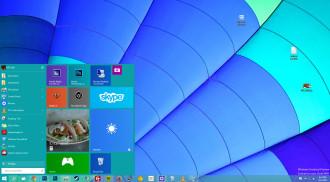 Microsoft appears to have further muddied the waters with its announcements about Windows 10 last week.
Microsoft appears to have further muddied the waters with its announcements about Windows 10 last week.Windows 10: the mess begins
 Microsoft appears to have further muddied the waters with its announcements about Windows 10 last week.
Microsoft appears to have further muddied the waters with its announcements about Windows 10 last week. Microsoft appears to have further muddied the waters with its announcements about Windows 10 last week.
Microsoft appears to have further muddied the waters with its announcements about Windows 10 last week. Software giant Microsoft reported a fall in its quarterly profit as sluggish PC sales dampened demand for Windows software and the company struggled with the impact of the strong US dollar.
Software giant Microsoft reported a fall in its quarterly profit as sluggish PC sales dampened demand for Windows software and the company struggled with the impact of the strong US dollar.
Shares of the world’s largest software company, which have surged to 14-year highs in the past few months, fell three percent.
The fall did not seem to faze the cocaine nose jobs of Wall Street who seemed to be expecting it. Not much can really stand up to a high dollar pressure and most thought the numbers were good enough.
Microsoft’s flagship Windows business has been under pressure for three years as PC sales have declined, although the market appears to be stabilising in recent months.
Currency shifts against the strong U.S. dollar also crimped profit in the fiscal second quarter, ended December 31, although Microsoft did not specify by how much. Microsoft gets almost three-quarters of its revenue from overseas, but a significant amount of that is still in US dollars.
Commercial licensing is chiefly sales of Windows and Office to business customers, which is Microsoft’s biggest revenue generator.
Microsoft reported profit of $5.86 billion for the latest quarter, compared with $6.56 billion last year.
Sales rose eight percent to $26.47 billion, largely due to the acquisition of Nokia’s phone handset business last year.
Analysts had expected revenue of $26.3 billion including some restructuring costs.
 Software king of the world Microsoft announced a deal to buy Revolution Analytics, the top commercial provider of software and services for the open-source R programming language for statistical computing and predictive analytics.
Software king of the world Microsoft announced a deal to buy Revolution Analytics, the top commercial provider of software and services for the open-source R programming language for statistical computing and predictive analytics.
Joseph Sirosh, Microsoft corporate vice president for machine learning, said the acquisition was to help more companies use the power of R and data science to unlock big data insights with advanced analytics.
Financial terms of the deal were not disclosed. Revolution Analytics is based in California with offices in London and Singapore.
David Smith, Revolution Analytics’ chief community officer, said that he was excited the work done with Revolution R will come to a wider audience through Microsoft.
“Our combined teams will be able to help more users use advanced analytics within Microsoft data platform solutions, both on-premises and in the cloud with Microsoft Azure. And just as importantly, the big-company resources of Microsoft will allow us to invest even more in the R Project and the Revolution R products.”
However Revolution is Open Source and uses the R programming language, which is a data analysis tool widely used by both academics and corporate data scientists. Revolution Analytics was best known for offering developer tools for use with the R language, and though Microsoft already works with R it is a huge change in direction to own something like Revolution.
Revolution was founded in 2007 by Yale University computer scientists to create a suite of tools for working with R. The company develops both a free, open source community version of its Revolution R suite of developer tools, as well as paid commercial versions of the software.
Revolution Analytics created tools that extended the open source version of the R language to help it get under the bonnet of big data.
Microsoft will continue to support Revolution’s existing products and customers.
 Taiwanese suppliers of notebooks are not over impressed by the news last week that Microsoft will give free upgrades to its Windows 10 operating system.
Taiwanese suppliers of notebooks are not over impressed by the news last week that Microsoft will give free upgrades to its Windows 10 operating system.
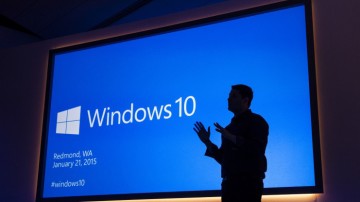 Microsoft has released details of Windows 10 and said that it will be free for many current Windows users.
Microsoft has released details of Windows 10 and said that it will be free for many current Windows users.
The company unveiled the Windows 10 consumer preview yesterday and showed off many new features which will be available.
What is surprising is that Windows 10 will be free for existing Windows users running versions of the OS, going back to Windows 7. That includes Windows 7, 8, 8.1 and Windows Phone.
Microsoft said that the upgrade would be free for the first year of release, but people would need to pay for it after that. However, Microsoft will support the upgrade for the “lifetime of the device”.
Microsoft CEO Satya Nadella said at the event he wanted Windows 10 to be the most loved release of Windows. It will have services everywhere but no bolted on apps.
There will be a new web browser for Windows 10, codenamed Project Spartan. It’ll be the primary browser in Windows 10 and will be available on PCs, tablets and phonesallows users to “draw” directly on a web page for quick sharing of notes. It includes a fully integrated reading list that follows a user across devices, as well as a built-in PDF viewer.
Another unusual thing about the OS is the use of a sort of virtual reality, called Windows Holographic, powered by a new kind of device called the HoloLens.
Microsoft’s Corporate Vice President of the Operating Systems Group, Joe Belfiore, announced it would bring back the much-missed Start Menu, but Belfiore revealed it would also have a full-screen mode that includes more of the Windows 8 Start screen. He also said Windows machines would go back and forth between two menus in a way that would not confuse people. Right.
Belfiore also showed a new notification centre for Windows, which puts a person’s notifications in an Action Center menu that can appear along the right side, similar to how notifications work in Apple OS X.
There is also a thing called Continuum to help so-called hybrid devices flip between themselves. Removing a keyboard from a tablet like the Surface Pro 3, say, will call up a dialogue box asking if a human wants to switch to tablet mode.
Microsoft has also parked its Cortana into Windows 10. People will be able to access it using a search bar next to the Windows logo in the taskbar.
Describing Cortana showed how users could ask it to play music, answer queries launch apps and open specific files, like a PowerPoint deck you’ve been working on. Cortana is also built into Spartan.
Windows 10 can work on devices smaller than 8 inches, which would have a special version of the OS tuned to the precise touch capabilities needed.
As an example of Universal Windows Apps, which are apps that provide a multi-modal experience across devices, Belfiore showed off revamped mobile versions of Microsoft Office.
The “consumer preview” version of Windows 10 will be available for PCs starting next week, and for phones in February. Some of the Windows 10 features Microsoft showed at the event will not immediately be available in preview builds of the software, but will roll out in the next three to four months.
Microsoft hasn’t yet set a date for the general release of Windows 10, but it’s expected to launch in the Autumn. Or Fall. Pride comes before a fall.
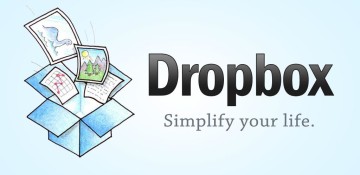 Online document-sharing outfit Dropbox has acquired US-Israeli firm CloudOn.
Online document-sharing outfit Dropbox has acquired US-Israeli firm CloudOn.
CloudOn is a developer of tools to simplify creating and editing documents on mobile devices.
Financial details were not disclosed but money is believed to have changed hands.
CloudOn will become Dropbox’s first Israeli office and will focus on R&D. Dropbox plans to hire more engineers in Israel following the purchase.
Dropbox is waxing lyrical about what CloudOn brings to the company. It says that the CloudOn team will help build collaboration capabilities into Dropbox.
This means that Dropbox might be moving into end user content creation tools. So far it has Mailbox, a mobile email client, and Carousel, a mobile image viewing application. But nothing like compare to Google Docs or Microsoft’s mobile Office.
CloudOn customers have been told that the service will shut down in the next two months and that no new users will be accepted after today.
What is not clear is where this leaves Dropbox’s developing relationship with Microsoft.
In November, Dropbox teamed up with Microsoft to allow Office software users to manage and share files through Dropbox’s website and mobile app.
Microsoft has its own file sharing solution, OneDrive and did not really need Dropbox. However if Dropbox is heading into application land, one wonders why either side would find a relationship attractive.
 Although Windows 10 won’t launch until the second half of this year, Microsoft is attempting to keep us interested by revealing more features of the operating system.
Although Windows 10 won’t launch until the second half of this year, Microsoft is attempting to keep us interested by revealing more features of the operating system.
 A British youth has been arrested over the hack that brought down the Playstation network and Xbox Live over the holiday period.
A British youth has been arrested over the hack that brought down the Playstation network and Xbox Live over the holiday period.
 There’s more research data on the tablet market out today and the latest report suggests gloom for 2015.
There’s more research data on the tablet market out today and the latest report suggests gloom for 2015.
 It seems that there is a large amount of pot calling kettle black when it comes to security.
It seems that there is a large amount of pot calling kettle black when it comes to security.
Last month, Google angered Microsoft by releasing the details of a security vulnerability ahead of Microsoft’s Patch Tuesday. Microsoft said that the patch was set to be released two days after Google went live with the details and that they refused to wait an extra 48 hours so that the patch would have been released along with the details of the exploit.
That would all be fine but Google does not have the same standards for itself. An exploit has been uncovered in Android 4.3 (Jelly Bean) – which covers roughly 60 per cent of Android’s install base, according to the Android Developer dashboard – and Google is saying that they will not patch the flaw.
The flaw, which exists in WebView impacts nearly 1 billion users, when using Google’s own numbers as a base along with Gartner figures.
To make matters worse Jelly Bean was first announced in June of 2012, which means that Google is dropping support for its mobile OS less than three years after it was released.
Google is clearly stating that legacy support for the OS is not on their agenda even while phones are still being flogged with Jelly Bean under the bonnet.
The question is why if Google is being such a bastard about its own operating system is it so keen to throw Microsoft under the bus?
 New research has found that only one in ten cloud apps are secure enough for enterprise use.
New research has found that only one in ten cloud apps are secure enough for enterprise use.
According to a report from cloud experts Netskope, organisations are employing an average of over 600 business cloud apps, despite the majority of software posing a high risk of data leak.
More than 15 percent of logins for business cloud apps used by organisations had been breached by hackers.
One in five businesses in the Netskope cloud actively used more than 1,000 cloud apps, and over eight per cent of files in corporate-sanctioned cloud storage apps were in violation of DLP policies, source code, and other policies surrounding confidential and sensitive data.
A quarter of all files are shared with one or more people outside of the organisation, and of external users with links to shared content, almost 12 percent have access to 100 or more files.
Netskope CEO Sanjay Beri said that 2014 left an indelible mark on security – between ongoing high-profile breaches and the onslaught of vulnerabilities like Shellshock and Heartbleed, CSOs and CISOs had more on their plate than ever.
“These events underscore the sobering reality that many in the workforce have been impacted by data breaches and will subsequently use compromised accounts in their work lives, putting sensitive information at risk,” he added.
The research also found that the most insecure apps were primarily linked with marketing, finance and human resource software, while cloud storage, social and IT/app management programmes had the lowest proportion of insecure apps.
“Employees today have shifted from thinking of apps as a nice-to-have to a must-have, and CISOs must continue to adapt to that trend to secure their sensitive corporate and customer data across all cloud apps, including those unsanctioned by IT,” Beri continued.
Google Drive, Facebook, Youtube, Twitter and Gmail were among the apps investigated.
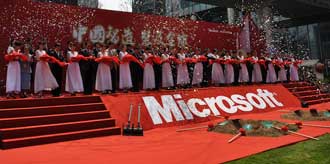 Tech giant Microsoft started the New Year by announcing it was releasing a feature phone which will be priced at $29.
Tech giant Microsoft started the New Year by announcing it was releasing a feature phone which will be priced at $29.
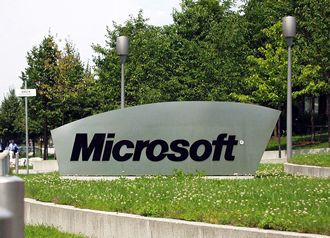 Software giant Microsoft has taken legal action against a company it claims is scamming people by representing itself as a Windows support outfit.
Software giant Microsoft has taken legal action against a company it claims is scamming people by representing itself as a Windows support outfit.
The Indian company, C-Cubed Solutions, is alleged to call people up saying people have had problems with their computers and conning them out of money.
The case claims that representatives from the company claim they represent Microsoft and then attempt to inveigle people into visiting web sites which are infected with malware, according to the Times of India. The caller may also attempt to get remote access to a computer and ask for payment using a credit card under the pretext of providing technical support.
Microsoft says it never cals people cold and advises people who get such calls never to give any information to people who claim to represent it.
The scam doesn’t only affect people in the USA – cold calls have been made to other countries including the UK, Ireland, Australia, Canada and New Zealand.